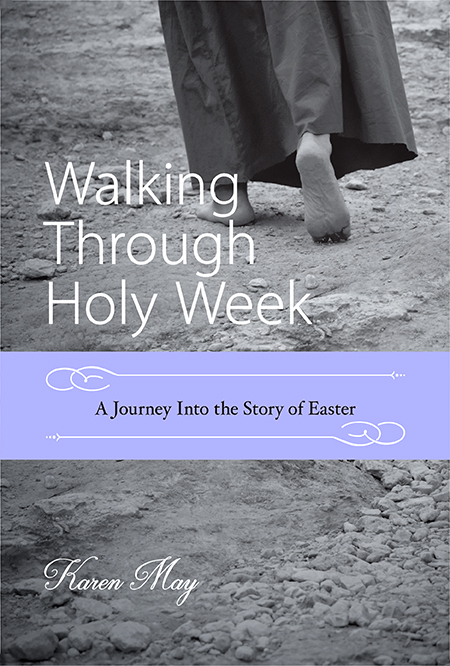
The season of Lent and Holy Week, the most sacred season for Catholics, the focus where all of our reality comes alive, is upon us. We can only feel sympathy for all those other Christians who have watered down Christ right out of the whole proverbial picture — let’s just wait for Christmas.
‘Walking Through Holy Week: A Journey into the Story of Easter’
Author: Karen May
Publisher: Karen’s Grace, LLC
Length: 213 pages
Release Date: Jan. 1, 2017
Available at: Kino Library
Along comes Karen May with an answer to help guide and inspire us. Her book, “Walking Through Holy Week: A Journey into the Story of Easter,” takes us on a journey in a way that enlightens us and allows us deeper into the sacredness of it all.
The book centers on Holy Week, of course, that point in all of reality, throughout all the history of time, where we celebrate and experience the Incarnation, the Crucifixion and the Resurrection. For Christians, particularly Roman Catholics, this is the Real Deal.
The course of the book begins on Palm Sunday and makes its way through Holy Thursday, Good Friday, Holy Saturday and Easter. For my own self, I’ve always wondered what was going on Monday through Wednesday of Holy Week but that is, obviously, for another book.
Each chapter is filled with an Introduction to the day, giving us insight into its meaning and its place within our religious faith. A Preparation follows, giving us strains and grains of insight for that day’s experience. The unfolding of the particular Mass of that day follows, along with commentary on the day’s Scripture readings, and it finishes with the wholly proverbial “Food for Thought,” where questions form the basis of reflection of the day’s events; a steady diet that helps keep the reader focused.
Let us sample the wares. In the introduction for Palm Sunday, we read about Christa McAuliffe, the first teacher to go into space who died tragically when the Challenger space shuttle exploded in 1986. Spirits and excitement were high, May writes, and suddenly things went very wrong when the shuttle exploded. May compares this to what happened to the Jewish people upon Jesus’s entrance into Jerusalem. Here, May relates how the music begins and we stand just as the people stood outside of Jerusalem.

On this day, the congregation is given palm fronds, what May calls “props.” However, these palm fronds actually signal our physical participation in the story itself. We begin outside, and then process in together into the great city of Jerusalem. May comments on the reading from Matthew 21, which is the reading that describes the scene.
Her proverbial “Food for Thought” asks three questions that are intended to set us thinking about that grand, historical event.
For the first reading from Isaiah, the same thing happens: the reading, the commentary and the proverbial “Food for Thought.” Even the Responsorial Psalm has its own “Food for Thought.” The same occurs with the second reading and with the reading of the Gospel.
Ultimately, it is a neat and tight package especially good for those who love the flow and rituals of liturgy. There is a bonus feature: May even includes the complete instructions for making a palm frond cross, no extra charge.
Overall, the book is of high utility and offers a method of deepening our experience of Holy Week.





